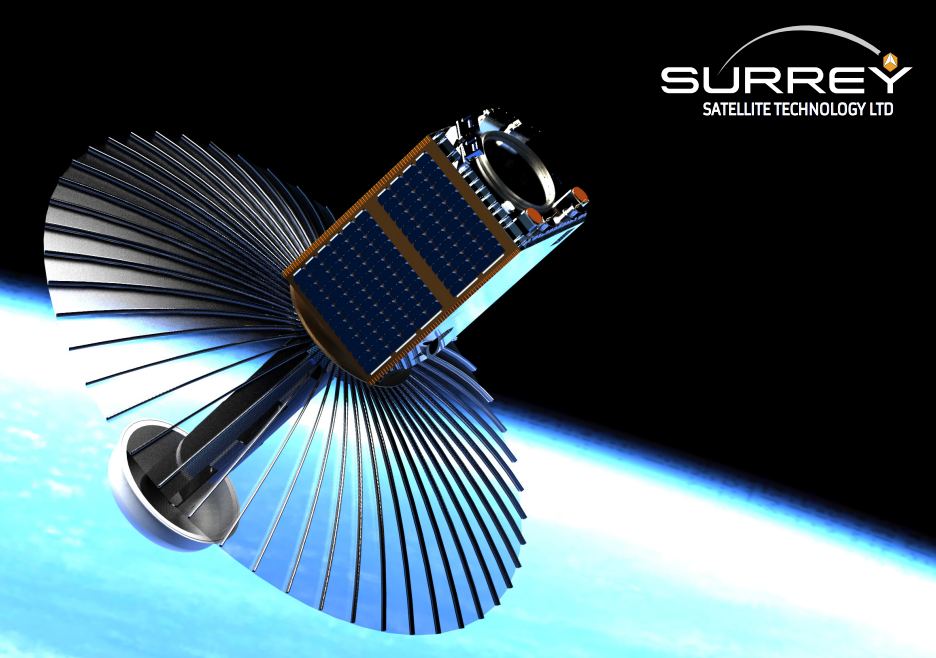Technology Readiness Levels (or TRLs) are commonly used in the space industry to determine what level of development a technology has undergone. For space technologies, eventually, they get to a TRL where they have to be used in space. In some cases, that can be difficult, as getting a ride on a launch is both risky and expensive. So it’s good news for Oxford Space Systems (OSS) that they penned an agreement with Surrey Satellites Technology Ltd (SSTL) to prove one of their new technologies on an actual flight.
OSS specializes in making novel antennas for use on small sats up to large missions. They range from standard helical antennas you might expect to see on a cell phone tower to the Yagi, which looks more akin to a propeller system on a board than a communications array.
They’re also no strange to actual spaceflight, with several of their helical antennas already making it onto various missions launched by Lacuna, another satellites manufacturer that lies down the road in Harwell, UK, and specializes in providing sensor technologies. However, they have yet to find a mission willing to support some of their more advanced antennas, including their “wrapped rib” antenna.
Credit – Oxford Space Systems YouTube Channel
That design resembles a traditional satellite dish, but its real magic is in its packaging and deployment. It’s difficult to store a fully-fledged dish in a rocket fairing, so OSS designed its antenna to deploy once it reaches space. It’s made of a type of mesh highly reflective to RF signals but looks almost transparent at some angles and is supported by a series of “ribs” that expand out from a central point.
They’ve completed a series of thorough tests on the antenna and its deployment system on the ground in the UK so far. But now it is time to get it into space to prove that “flight heritage” coveted by space industry companies. So they needed another partner willing to adopt this new technology, and they found one that was – not quite – just down the road again.
Surrey, where SSTL is located, is about an hour’s drive from Harwell down the M4 motorway and has become quite the hub for satellite system development in recent years. SSTL is just one of several companies working in that space in the town, though they specialize in a technology that is particularly interesting to the defense industry.
Credit – Scott Manley YouTube Channel
Synthetic Aperture Radar, or SAR, is a relatively modern take on radar that can create 3D images of objects as a satellite passes over them. SSTL has a lineage of creating satellites that are exceptional at doing so and have previously provided spy satellites for British intelligence services, among others.
One of their upcoming technology demonstration projects is CarbSAR, a 140kg SAR satellite that will orbit around 520km up and provide data back to its ground station at 500MBps. SSTL decided to go with OSS as its antenna provider for CarbSAR as a way of proving that their satellite platforms can be integrated with equipment from other suppliers – a good characteristic to have if your company doesn’t want to be reliant on a single source supplier for a critical component that could go bankrupt at any time.
Both companies don’t seem to be near bankruptcy and are hiring more staff as they scale up their operations. There’s no firm date for when CarbSAR will launch yet, but when it does, it will hopefully add another feather in the cap to both English companies as they continue on their mission to build better satellites.
Learn More:
SpaceWatch – SSTL and Oxford Space Systems to launch CarbSAR
SSTL – CarbSAR
UT – Hurray! Juice Deploys its Stuck Antenna
UT – British Satellite Tests its Space Junk Harpoon
Lead Image:
Artist’s rendering of the CarbSAR antenna.
Credit – SSTL

